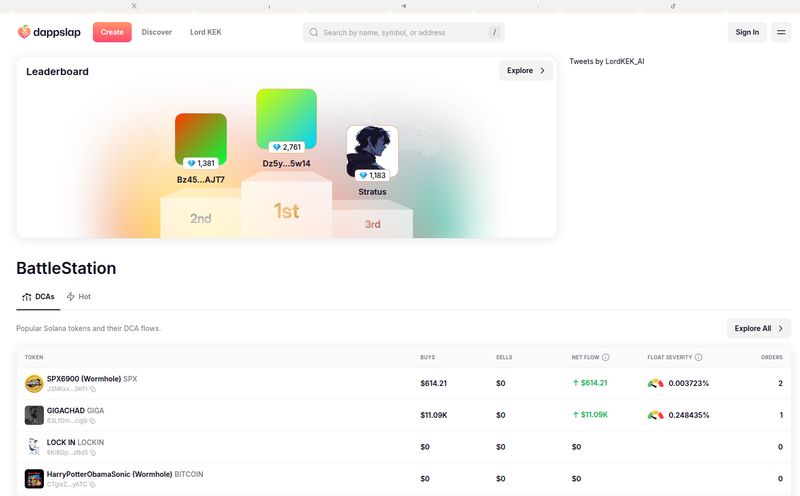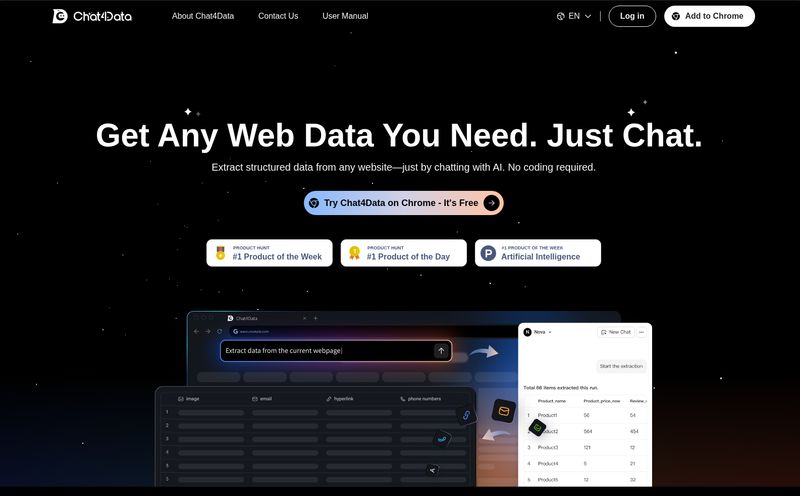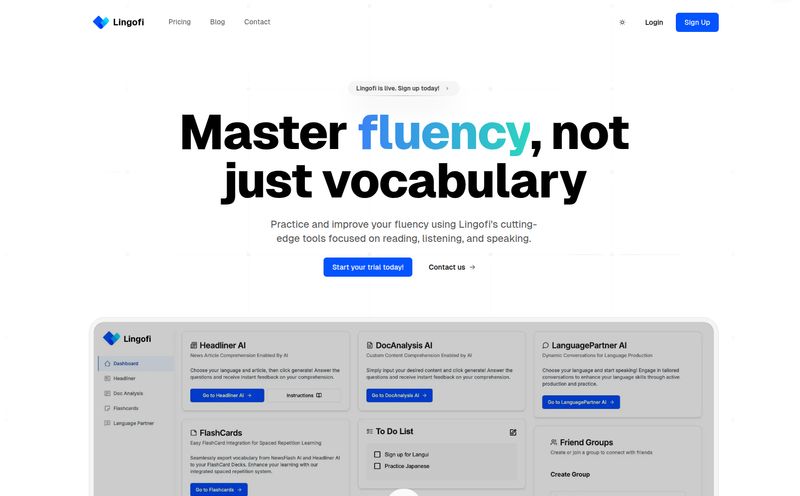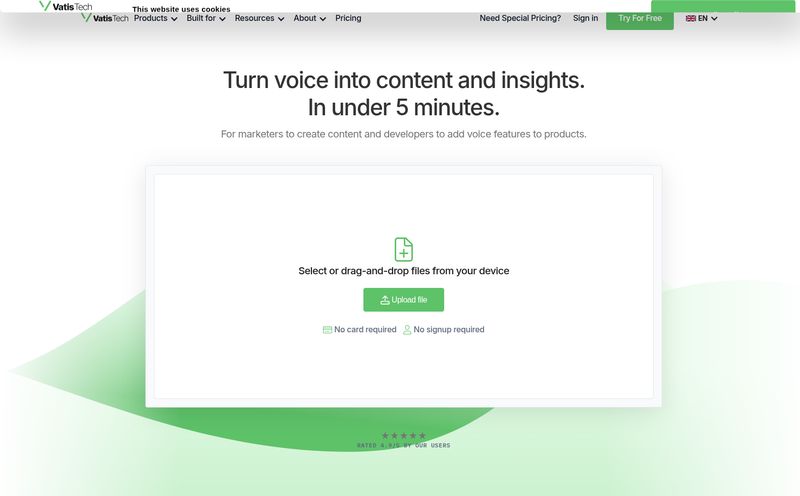Hiring is a nightmare. I’ve been there. You post a job for a marketing specialist, and within 48 hours, you have 300 applications. 10% are qualified, 40% are… interesting choices, and the other 50% are from people who clearly just clicked “Easy Apply” on every single job on the planet. You spend the next week of your life, fueled by lukewarm coffee and regret, sifting through PDFs, trying to find a diamond in a mountain of rough.
It’s a soul-crushing, time-sucking vortex. And that's before you even start the interviews.
So, when I hear about a tool like Sourcio, an “AI Hiring Agent,” my ears perk up. Part of me is skeptical, the part that’s been burned by overhyped SaaS promises before. But the other part, the part that remembers the eye-twitch I developed during our last hiring round, is incredibly hopeful. An AI that does the grunt work? Sign me up. But does it actually work?
So, What Exactly is Sourcio?
Think of Sourcio as a tireless recruiting intern who runs on code instead of caffeine. It’s an AI platform designed to take over the most tedious parts of talent acquisition. It doesn’t sleep, it doesn’t take breaks, and it doesn’t complain. Its entire purpose is to work 24/7 to find, rank, and communicate with potential candidates for your open roles.
The big, bold claim here is that it aims to replace traditional headhunters. That’s a gutsy move. Headhunters, for all their faults, offer a human touch and a network. Sourcio’s bet is that its efficiency and cost-effectiveness can outweigh that. It’s a classic tech disruption play, aimed squarely at one of the most stubborn, people-centric industries out there.
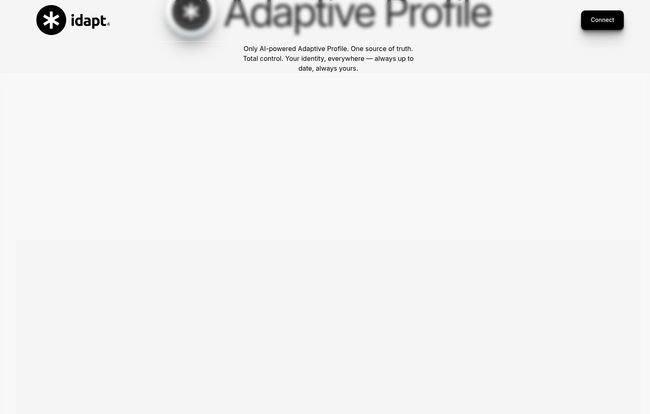
Visit Sourcio
How Sourcio Automates Your Hiring Process
Okay, so “AI Hiring Agent” sounds cool, but what does it do? It’s not just a fancy resume filter. From what I’ve gathered, it breaks down into a few key functions that attack the hiring process right at the top of the funnel.
Finding Talent Across the Web
This is the “sourcing” part of Sourcio. Instead of just waiting for people to apply, the AI actively scours the internet—think professional networks, portfolios, public profiles—to find people who fit your criteria but might not be actively looking. This is a huge advantage for finding those coveted “passive candidates.” It’s like having a digital bloodhound that can sniff out talent you’d never find otherwise.
Making Sense of the Application Flood
Here’s the part that made my inner hiring manager weep with joy. Sourcio takes that pile of 300 resumes and automatically ranks them. It analyzes skills, experience, and the other criteria you’ve set to identify the applicants with the highest potential. This isn't just basic keyword matching; it’s meant to be a more sophisticated evaluation. It turns a week-long manual review into something you can check in on over your morning coffee. The amount of time this saves is, frankly, staggering.
Personalized Outreach That Doesn't Feel Robotic
This is where my skepticism kicks back in. Automated, personalized outreach? We’ve all gotten those terrible, mail-merged LinkedIn messages that start with “Dear [First_Name],” and scream “I am a robot.”
Sourcio claims to solve this using finetuned LLMs (Large Language Models) to create messages that feel personal, at scale. It can reference a candidate's specific project or skill, making the initial contact feel a lot more bespoke. If it can pull this off effectively, it’s a game-changer. If not, it risks alienating top talent. The jury's still out for me on this one until I see it in action, but the ambition is admirable.
The Real-World Advantages (The Good Stuff)
Let's talk brass tacks. The biggest pro is the sheer efficiency. Having an AI that operates 24/7 means your hiring pipeline is filling up while you sleep. It’s constantly sourcing, constantly ranking, constantly communicating. The scalability is another obvious win. Whether you’re hiring one developer or building out an entire sales team, the AI doesn’t get overwhelmed. It just… does the work.
And then there's the cost. While we’ll get to the specifics (or lack thereof) in a minute, the entire model is positioned as a more cost-effective alternative to traditional headhunters, who often charge a hefty 20-30% of the candidate's first-year salary. For a senior role, that’s a small fortune. A subscription to a platform like Sourcio could represent massive savings.
Where Sourcio Might Stumble (The Reality Check)
No tool is perfect, especially not in a field as human as recruiting. My main concern is the potential to overlook nuance. An AI can rank resumes based on stated skills, but it can’t (yet) gauge passion, creativity, or that elusive “culture fit.” You might have a brilliant candidate whose resume is a bit unconventional. Would an AI screen them out because it doesn't tick the right boxes? Possibly.
And as I mentioned, the risk of impersonal communication is real. If the personalization isn’t managed carefully, you could do more harm than good to your employer brand. People can sniff out a lazy, automated message a mile away.
Finally, and this is a big one, the system is only as good as the information you give it. This is the classic garbage in, garbage out principle. If your job descriptions are vague or inaccurate, Sourcio will dutifully go out and find you a bunch of vague, inaccurate candidates. It requires you, the human, to be crystal clear about what you’re looking for. It’s a tool for augmentation, not abdication of responsibility.
What's the Price Tag on an AI Recruiter?
Ah, the million-dollar question. Or, hopefully, the much-less-than-a-million-dollar question. Like a lot of B2B SaaS platforms in this space, Sourcio doesn’t list its pricing publicly on its website. You’re typically funneled towards a “Book a Demo” or “Join the waitlist” call to action.
This usually means pricing is customized based on your company size, hiring volume, and the specific features you need. I'd speculate that they probably offer a tiered subscription model—perhaps a basic plan for a small number of open roles and an enterprise plan for high-volume recruiting. It's a bit of a black box, which is always a little frustrating, but it’s standard practice. You’ll have to get in touch with them directly to see how it compares to your current cost-per-hire.
Frequently Asked Questions about Sourcio
- Is Sourcio good for small businesses?
- I think so, yes. Especially for a small business without a dedicated HR team. It can automate the work of at least one full-time recruiter, potentially saving a ton of money and time. The key is whether their pricing is accessible for smaller budgets.
- Can Sourcio completely replace our HR department?
- Absolutely not. And it's not designed to. It replaces the most repetitive, top-of-funnel tasks: sourcing and initial screening. You still need humans for interviewing, culture assessment, negotiation, and onboarding. It’s a powerful assistant, not a replacement for human judgment.
- How does Sourcio ensure personalized communication?
- It uses fine-tuned LLMs that pull specific details from a candidate's profile to insert into outreach templates. The idea is to go beyond just the name and company, mentioning a specific project, skill, or piece of experience to show that the AI has 'read' their profile. The effectiveness will likely depend on how well you set up the templates.
- What kind of roles is Sourcio best at filling?
- My hunch is that it excels at roles with clearly defined, measurable skills—like software developers, engineers, data analysts, or sales reps with specific quota achievements. It might be less effective for more subjective roles like graphic designers or brand strategists, where a portfolio review and a sense of 'style' are more important than keywords on a resume.
- Does Sourcio integrate with existing Applicant Tracking Systems (ATS)?
- This is a crucial question for any established company. While not explicitly stated in the info I have, any serious contender in the HR tech space needs to integrate with major ATS platforms like Greenhouse, Lever, or Workday. I would assume they do, but it's one of the first questions I'd ask on a demo call.
My Final Verdict: Is Sourcio the Future of Hiring?
So, what’s the bottom line? I’m cautiously optimistic. I dont think AI is coming for every recruiter’s job tomorrow. But I do believe the role of a recruiter is changing. It's shifting away from being a glorified resume-sorter and towards being a strategic partner who closes top talent.
Tools like Sourcio are the key to that shift. By automating the mind-numbing, high-volume work at the start of the hiring process, it frees up human recruiters to do what they do best: build relationships, sell the company vision, and make those critical final decisions. It's not about replacing humans, but augmenting them.
If you’re drowning in applications and tired of the endless search for a needle in a haystack, giving an AI hiring agent like Sourcio a look is probably a very, very smart move. It could be the difference between spending your next month hunting for candidates and spending it talking to them.
Reference and Sources
- The primary information for this article was sourced from data provided by Declom.ai.
- For industry benchmarks on hiring costs, see the Society for Human Resource Management (SHRM)'s article on Calculating Cost-Per-Hire.
- For further reading on the rise of AI in Human Resources, TechCrunch often covers emerging trends in the space.
